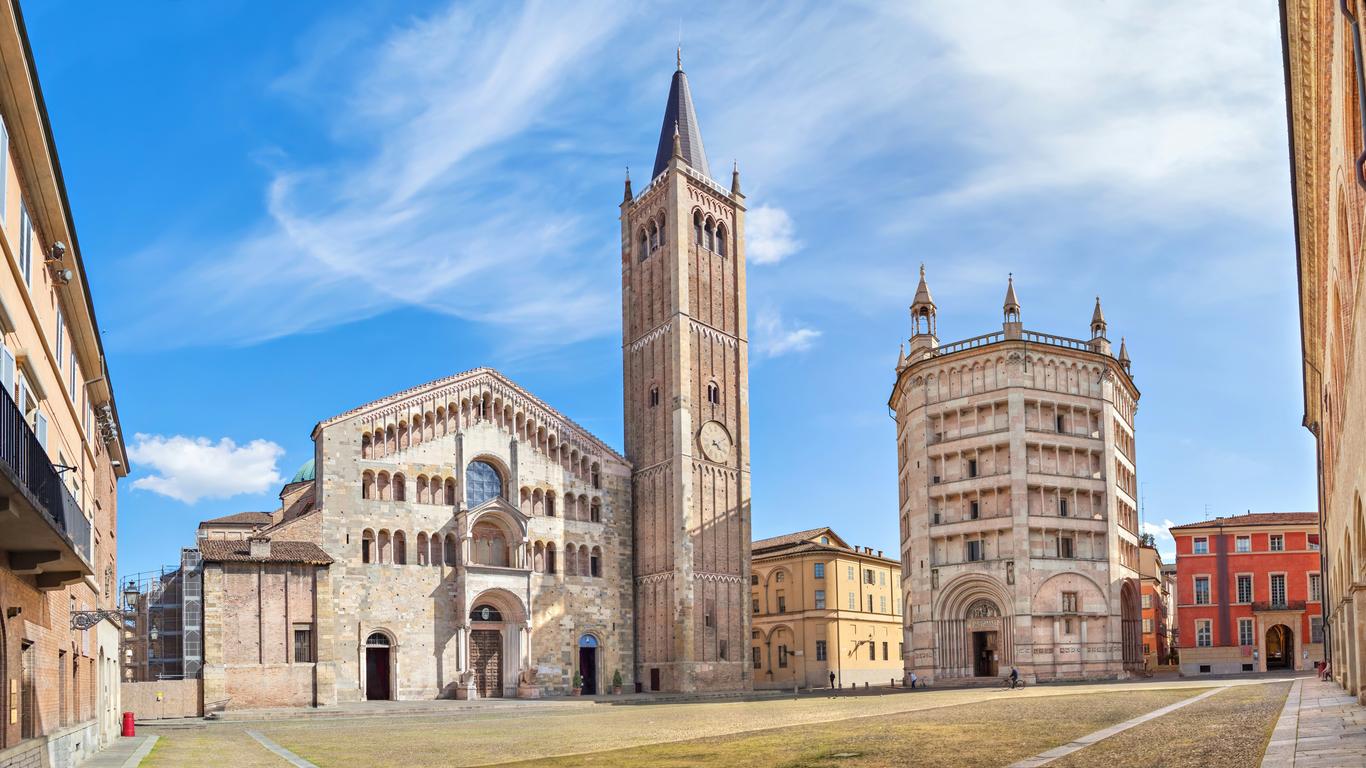Famed for its Parmesan cheese and prosciutto ham, Parma is a university city in the Emilia-Romagna region of Italy. It’s home to distinct Romanesque-style architecture and world-renowned works of art, together with historic castles which scatter the Apennines Mountains and Parma plains.
Parma’s historic city centres around the Piazza del Duomo and the landmark Parma Cathedral. This religious masterpiece exhibits illusionistic frescoes by Renaissance painter Antonio da Correggio on its dome and an iconic 13th century bell tower. An octagonal, pink marble baptistery stands alongside, together with the 11th century Bishop’s Palace. Just to the west lies the Sanctuary of Santa Maria della Steccata, a Renaissance-style basilica richly decorated by renowned local artists, together with the Teatro Regio, one of Italy’s most illustrious opera houses. The 16th-century palace complex of Palazzo della Pilotta is situated to the north of here and now houses the National Gallery and Archaeological Museum, as well as a museum dedicated to Italian typographer Giambattista Bodoni and the Baroque-style Teatro Farnese, one of the world’s first permanent proscenium theatres. Across the Giuseppe Verdi bridge is the opulent Ducal Palace, built in the 18th century by former Duke Francesco Farnese on the remains of a castle. It lies on the edge of a park of the same name, with the Fontana del Trianon at its western end. Outside of the city are numerous castles and fortresses to explore, including the impressive Bardi Fortress which nestles in the rocky Apennines Mountains, the Castle of Compiano with its International Masonic Museum, and the Royal Palace of Colorno in the plains of Parma.
Parma’s Aeroporto Internazionale di Parma lies to the north-west of the city centre and offers flights across Europe, while Parma’s train station, situated just outside the historic centre, has connections across Italy along the Milan-Bologna line. Four trolleybus routes and numerous public buses also traverse the city, while most of its historic sights are easily accessed on foot.
The first necropolis to be built on the present-day Piazza del Duomo was constructed between 1500 and 800 BC, with the city believed to have been named by the Etruscans. A Roman colony was founded in 183 BC with a forum where Garibaldi Square is today, establishing itself as an important hub along the ancient Roman routes of Via Aemilia and Via Claudia Augusta.





